Plastic Free Baby Bath Routine: Safe, Sustainable & Zero Waste Parenting Tips
When a parent decides to skip plastic in their baby’s bath routine, they make a powerful choice—for health, for sustainability, and for cleaner living. Every splash of water, every soap bar, and every toy in that tub matters. As families across the U.S. embrace zero-waste parenting, more mothers and fathers seek a plastic free baby bath routine that keeps their newborns safe from harmful chemicals like BPA and phthalates, while reducing plastic waste in landfills and oceans.
This guide shows you how to build a baby bath ritual without plastic—from eco-friendly bathtubs and washcloths to wooden and natural rubber toys. You’ll find step-by-step instructions, product suggestions, and practical tips to adapt this routine in the U.S. market. Expect insights on using organic cotton towels, refillable glass bottles, zero waste soap bars, and sustainable bath accessories.
By choosing this path, you protect your child’s sensitive skin, reduce microplastic exposure, and contribute to a healthier planet—all during the most everyday ritual: bath time.
Why Go Plastic-Free for Baby Baths?
Parents across the U.S. ask one key question: Why should I remove plastic from my baby’s bath routine? The answer connects directly to health, sustainability, and peace of mind.
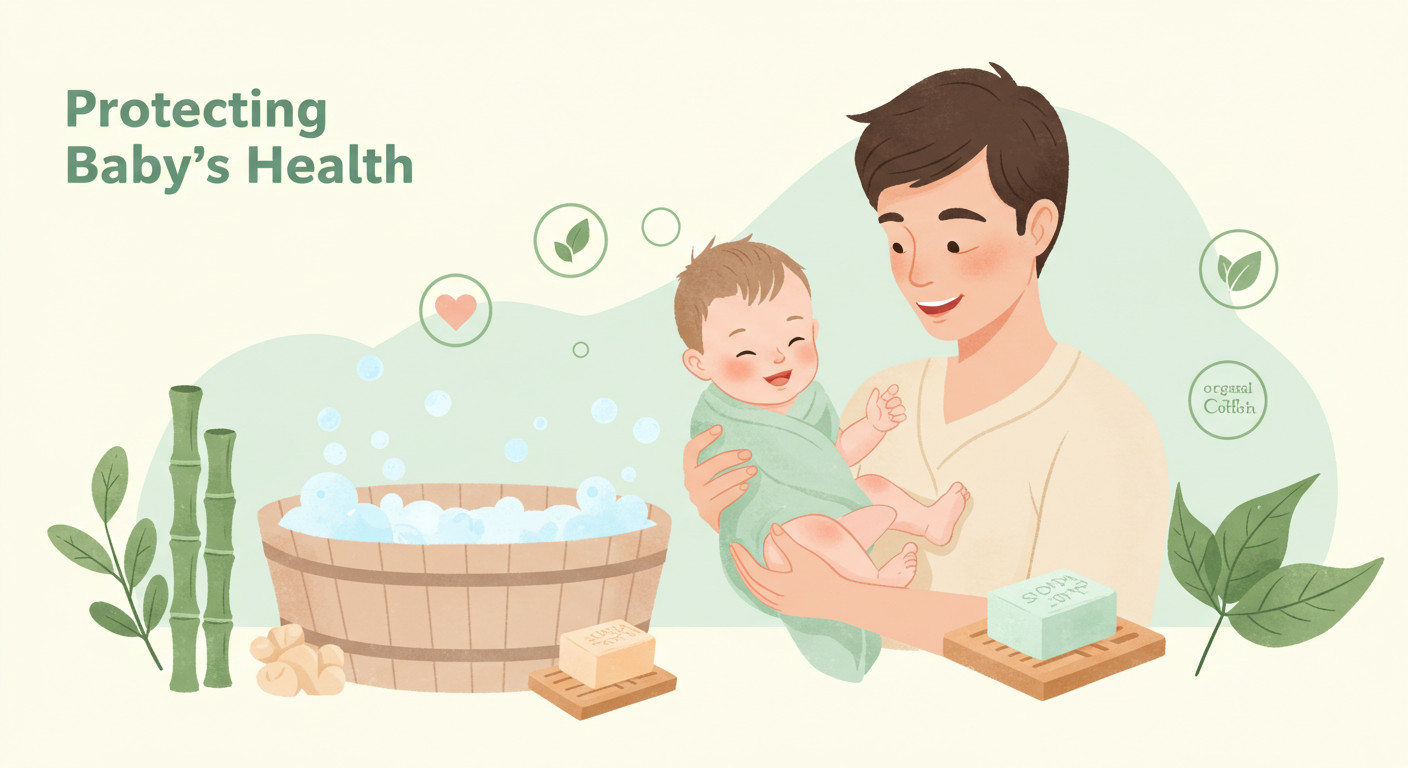
1. Protecting Baby’s Health
Plastic items often leach BPA, phthalates, and microplastics into warm bathwater. Babies have thinner, more absorbent skin, which increases the risk of chemical exposure. When you replace plastic bottles and toys with organic cotton washcloths, natural rubber toys, and glass containers, you cut that risk instantly.
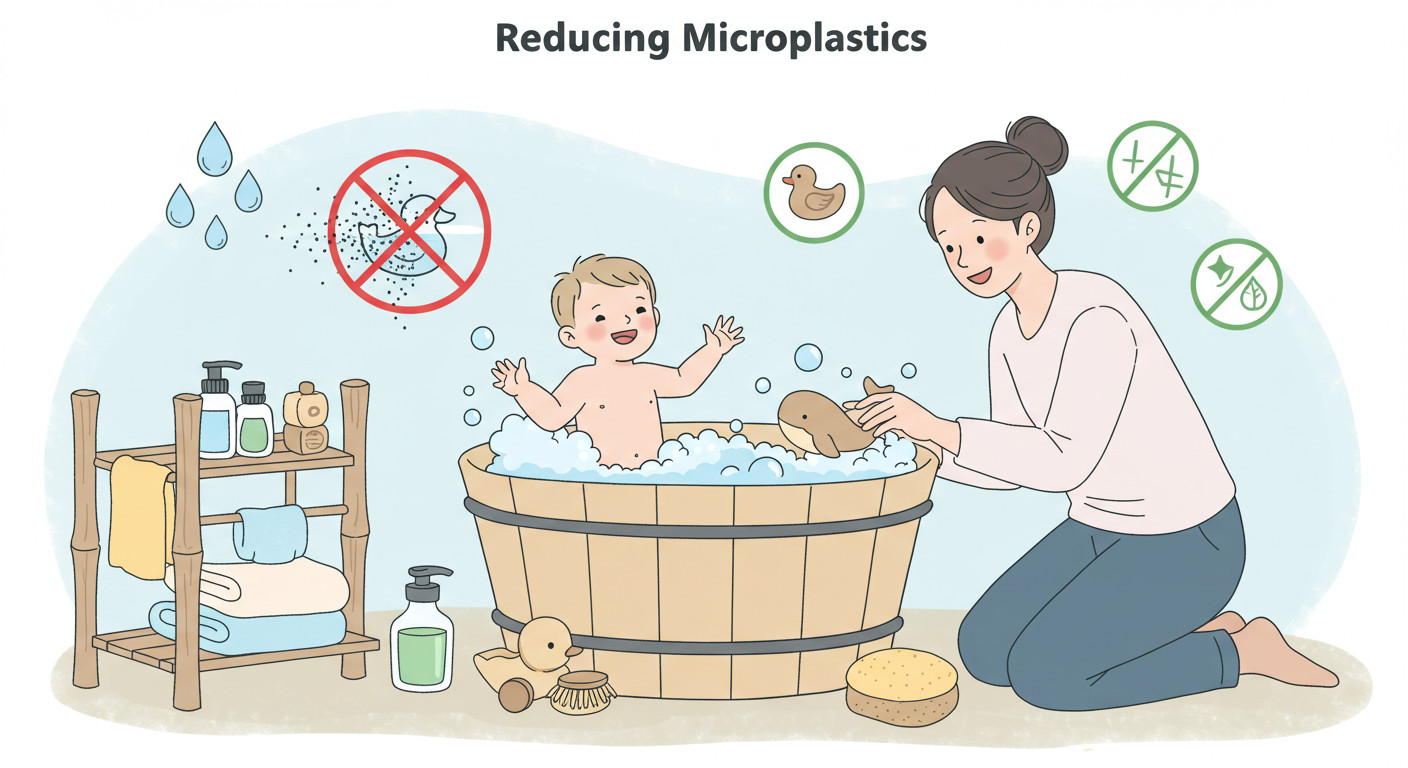
2. Reducing Microplastics
Every time you scrub a plastic sponge or squeeze a plastic bath toy, tiny particles break off and flow into the water. Over time, those microplastics reach your baby’s skin and even the household water system. Switching to plastic-free alternatives like bamboo sponges or wooden toys ensures a cleaner, safer bath.
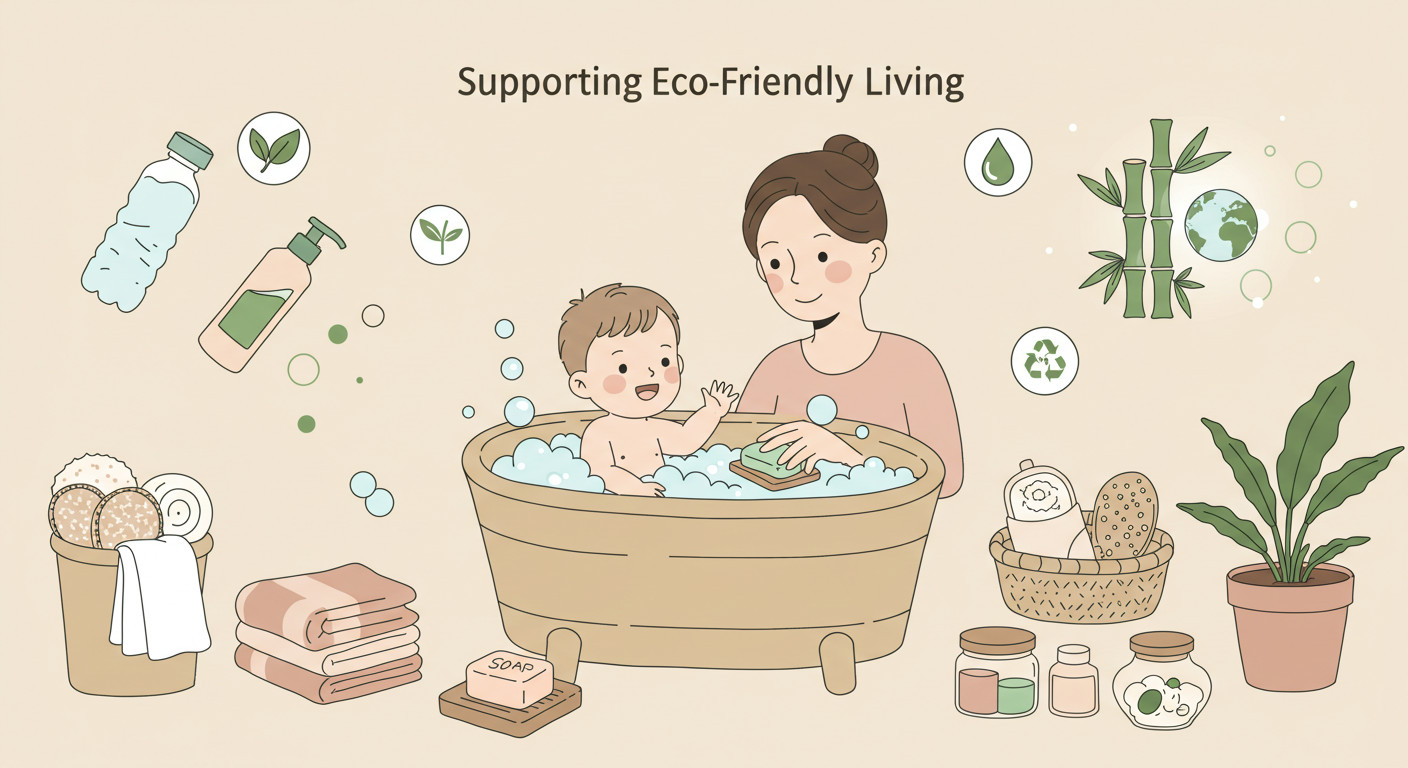
3. Supporting Eco-Friendly Living
Plastics stay in landfills and oceans for centuries. By choosing a plastic free baby bath routine, you actively lower your household footprint. Imagine swapping one plastic baby tub for a stainless steel or bamboo tub—that choice keeps more waste out of the environment and sets an example of sustainable parenting.
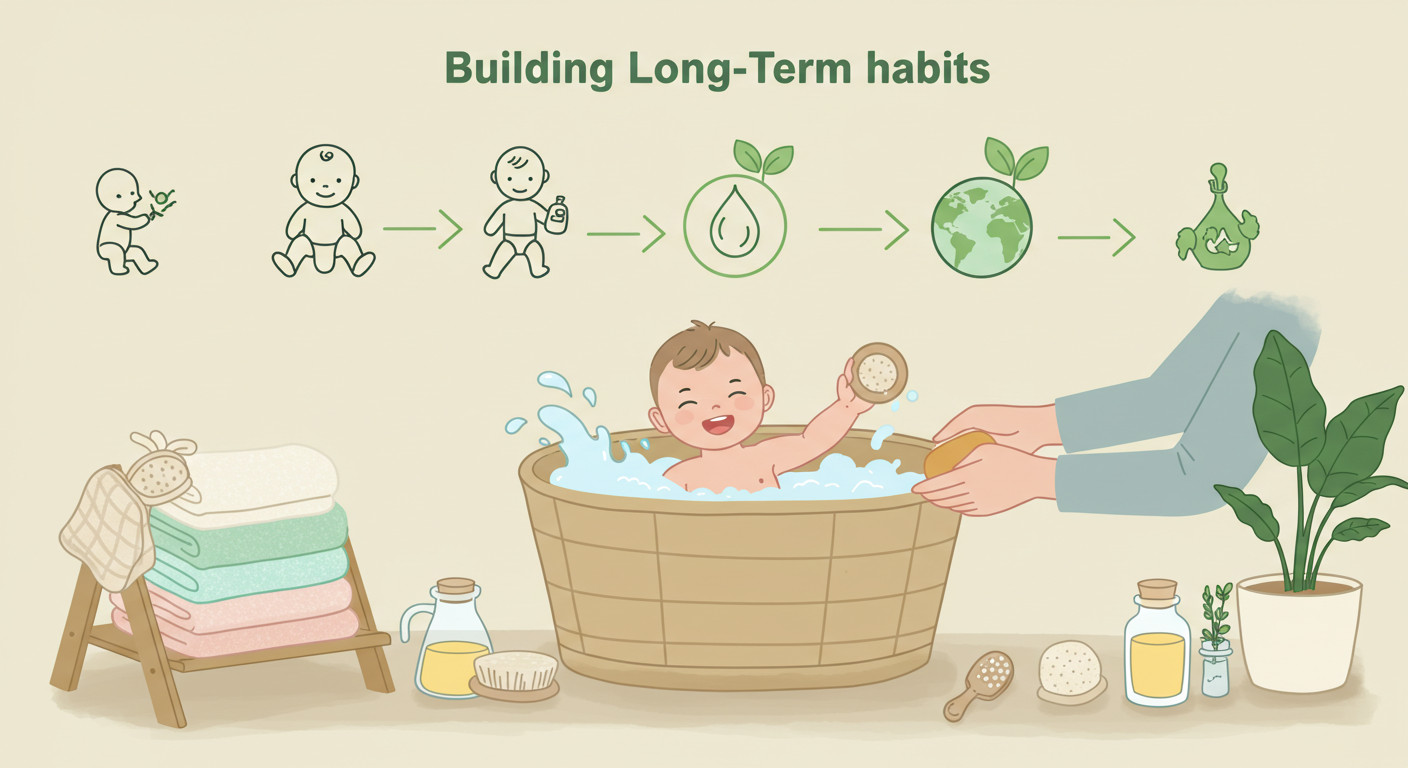
4. Building Long-Term Habits
A bath routine happens daily, which makes it the perfect place to practice sustainability. Parents who create a zero waste baby bath setup often extend that mindset to diapers, baby clothing, and nursery essentials. One eco-friendly habit encourages another, until the entire household routine becomes greener.
Essential Plastic-Free Baby Bath Products
A true plastic free baby bath routine starts with the right tools. You don’t need dozens of products—you just need safe, eco-friendly basics that replace plastic without sacrificing comfort or convenience. Here are the essentials every American parent can add to bath time:
Plastic-Free Baby Bathtubs
-
Stainless Steel Basins → Durable, non-toxic, and easy to clean.
-
Bamboo Baby Tubs → Lightweight, sustainable, and naturally antibacterial.
-
Silicone Foldable Tubs (Platinum-Cured, Food Grade) → Safe alternative when you need portability, unlike traditional plastic tubs.
Eco-Friendly Baby Bath Toys
-
Natural Rubber Ducks & Toys → Fun, squeezable, and completely biodegradable.
-
Wooden Bath Toys (maple, beech) → Smooth, water-safe, and painted with non-toxic dyes.
-
Cork Bath Toys → Lightweight and mold-resistant.
Washcloths & Sponges
-
Organic Cotton Washcloths → Soft, chemical-free, and washable.
-
Hemp Washcloths → Naturally antimicrobial and long-lasting.
-
Loofah or Sea Sponge → Gentle exfoliation, 100% compostable after use.
Soap & Shampoo Options
-
Organic Baby Soap Bars → Olive oil, shea butter, or calendula-based bars keep baby skin soft.
-
Refillable Glass Bottles with Pumps → Fill them with homemade liquid soap or store-bought organic refills.
-
Zero Waste Shampoo Bars → Perfect for fine baby hair, packaged without plastic.
Storage & Accessories
-
Glass Jars for Bath Salts & Oils → Safer than plastic containers and easy to reuse.
-
Bamboo Storage Baskets → Store towels, toys, or soap bars neatly.
-
Compostable Paper Wrapping → Wrap homemade soaps or gifts without plastic waste.
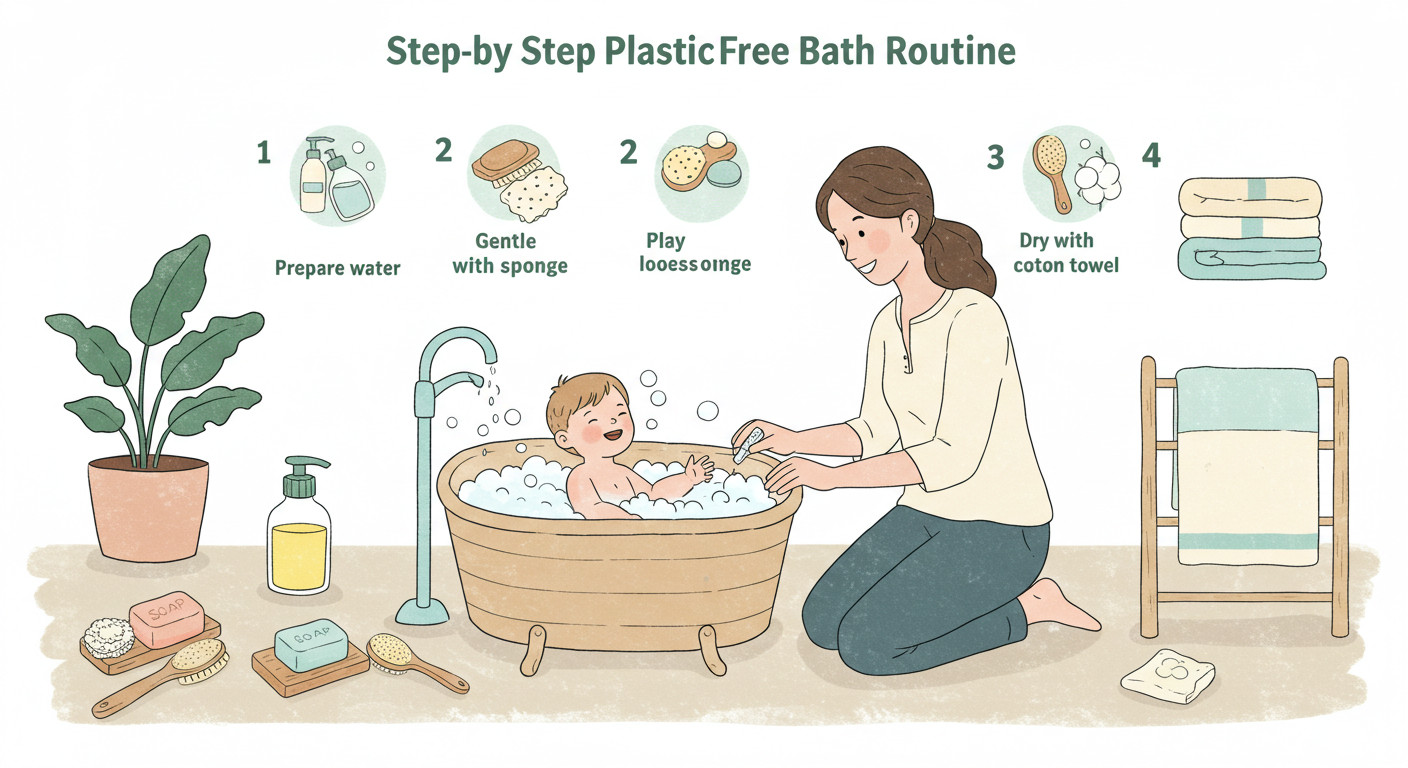
Step-by-Step Plastic-Free Bath Routine
Building a plastic free baby bath routine doesn’t mean complicating bath time. You simply swap harmful products with sustainable ones and follow a mindful process. Here’s a step-by-step routine you can use at home:
1. Prepare the Bath Area
-
Fill a bamboo or stainless steel tub with lukewarm water (about 100°F).
-
Lay out organic cotton towels, reusable washcloths, and zero waste soap bars before you start.
-
Place glass jars with baby oil or lotion nearby so you don’t scramble for products mid-bath.
2. Get Baby Ready
-
Keep the room warm and cozy.
-
Undress your baby on an organic cotton changing mat or a soft hemp towel.
-
Smile and talk to your baby to create a calm mood—eco-friendly routines feel nurturing when you involve your child emotionally.
3. Gentle Cleaning
-
Wet a hemp washcloth or natural sponge and gently cleanse the skin.
-
Lather a calendula or shea butter baby soap bar in your hands first, then apply the foam—never rub the bar directly on newborn skin.
-
Wash from top to bottom: start with the head, then arms, tummy, legs, and finally the diaper area.
4. Wash Baby’s Hair
-
Use a solid shampoo bar or a mild homemade liquid shampoo stored in a refillable glass bottle.
-
Massage gently with your fingertips, then rinse with a small bamboo cup.
5. Playtime Without Plastic
-
Hand your baby a natural rubber duck or a wooden bath toy for fun.
-
Limit toys to one or two at a time—this keeps the bath clutter-free and sustainable.
6. Rinse and Dry
-
Rinse your baby with fresh warm water.
-
Wrap them in a thick organic cotton towel.
-
Pat dry instead of rubbing to avoid irritation.
7. After-Bath Care
-
Massage your baby with organic coconut oil or calendula oil stored in a glass pump bottle.
-
Dress them in organic cotton or bamboo clothing for a full eco-friendly routine.
-
Store used washcloths in a laundry basket made of wicker or bamboo—skip the plastic hampers.
Practical Tips for American Parents
Creating a plastic free baby bath routine in the U.S. feels easier than most parents expect. The right swaps, smart shopping, and mindful habits can make your baby’s bath both eco-friendly and budget-friendly. Here’s how American families can do it:
️ Shop Smart with Accessible Brands
-
Whole Foods Market → Offers organic cotton towels, baby soaps, and eco-friendly bath oils.
-
Etsy USA Shops → Find handmade wooden bath toys and natural rubber ducks.
-
Amazon Eco-Friendly Section → Refillable glass bottles, bamboo washcloths, and compostable storage options.
-
Target (Made by Design, Cloud Island lines) → Affordable organic baby washcloths and towels.
Budget-Friendly Plastic-Free Swaps
-
Replace disposable wipes with washable hemp cloths.
-
Use a solid shampoo bar instead of single-use plastic bottles—lasts longer and reduces waste.
-
Choose multi-purpose oils (like coconut oil) that work for both skincare and diaper area.
-
Invest in a stainless steel or bamboo tub once, instead of replacing cheap plastic tubs every year.
♻️ Build Zero Waste Habits Around Bath Time
-
Dry baby clothes and towels on a bamboo drying rack instead of plastic hangers.
-
Keep homemade soaps in compostable paper wraps rather than plastic containers.
-
Store bath salts, oils, or baby powder in glass jars with bamboo lids.
-
Add a small indoor plant near the tub area—it freshens the air and reinforces a green lifestyle.
U.S. Parenting Insight
Many parents worry that going plastic-free means spending more. In reality, switching to durable products like bamboo baskets, organic washcloths, and natural rubber toys saves money over time. These items outlast plastic and can even be passed down between siblings.
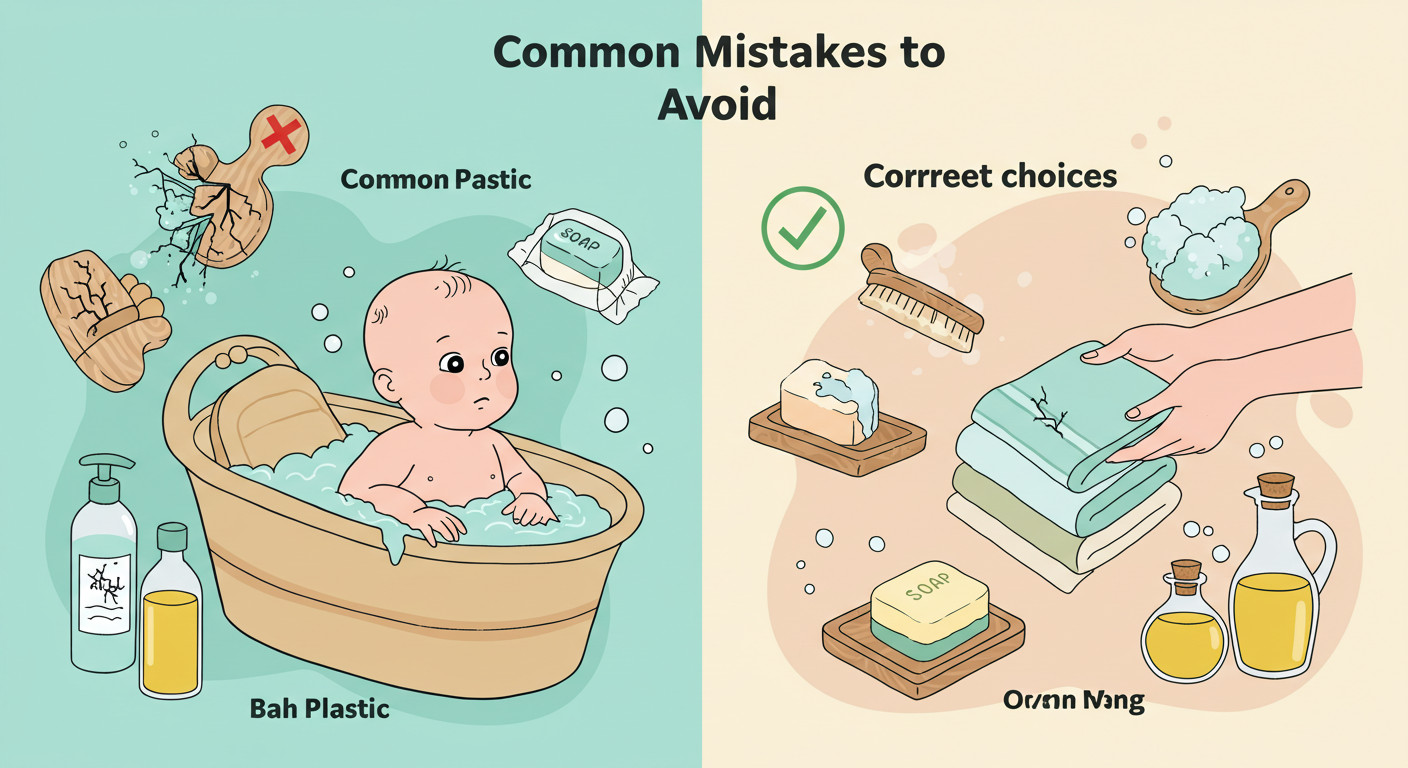
Common Mistakes to Avoid
Even the most eco-conscious parents sometimes slip when building a plastic free baby bath routine. Recognizing these mistakes early helps you save time, money, and stress while keeping bath time safe and sustainable.
❌ Mistake 1: Trusting “BPA-Free” Labels
Many baby bath products in the U.S. advertise “BPA-free,” but they still use other harmful plastics like PVC or phthalates. Don’t settle for BPA-free marketing. Choose glass, stainless steel, bamboo, or natural rubber instead.
❌ Mistake 2: Using Too Many Products
Babies don’t need a cabinet full of bath gels, shampoos, and lotions. Overbuying creates clutter, costs more, and often reintroduces plastic packaging. Stick with a gentle organic baby soap bar and one multi-use organic oil.
❌ Mistake 3: Storing Soap in Plastic Containers
Some parents make the switch to bar soap but then wrap it in plastic or store it in sealed containers. Soap needs air circulation. Use wooden soap dishes or compostable paper wraps to keep bars dry and safe.
❌ Mistake 4: Ignoring Microplastics in Toys
Soft plastic bath toys often break down in warm water, releasing microplastics and mold. Swap them for wooden bath toys, cork toys, or natural rubber ducks.
❌ Mistake 5: Rushing the Routine
Parents sometimes rush to finish the bath, which leads to forgotten steps like gentle rinsing or proper drying. A calm routine using organic cotton towels ensures baby skin stays healthy and reduces irritation.
❌ Mistake 6: Falling Back on Single-Use Products
Disposable wipes, single-use cotton pads, and plastic bottles sneak back into routines. Replace them with washable hemp cloths, refillable glass bottles, and organic cotton pads.
Conclusion & Final Thoughts
Choosing a plastic free baby bath routine is more than a trend—it’s a lifestyle shift that protects your baby’s health and supports a sustainable future. Every time you swap a plastic toy for a natural rubber duck, or trade a plastic bottle for a solid soap bar, you reduce toxic exposure and cut waste.
Parents in the U.S. face endless product choices, but going plastic-free simplifies bath time. You use fewer items, save money over the long term, and create a safer environment for your baby. From organic cotton towels to bamboo bath accessories, these small changes add up to a big impact.
This journey also inspires habits beyond bath time. Once you commit to eco-friendly bath products, you naturally look for zero waste baby wipes, sustainable baby clothing, and eco friendly nursery essentials. The routine becomes part of a bigger commitment to raising your child in harmony with the planet.
Remember: you don’t have to replace everything at once. Start with one or two swaps—maybe a shampoo bar or a hemp washcloth—and build from there. Each step strengthens your baby’s wellness and reduces your family’s plastic footprint.
In the end, bath time becomes more than just a daily ritual. It becomes an opportunity to bond with your baby, nurture their skin with safe organic care, and contribute to a cleaner world for future generations.
FAQ – Plastic Free Baby Bath Routine
1. Is a plastic free baby bath routine safe for newborns?
Yes. When you use organic cotton washcloths, natural rubber toys, and solid soap bars, you reduce chemical exposure and protect newborn skin. Always do a patch test with new products.
2. What is the best alternative to plastic bath toys?
Choose natural rubber ducks, cork toys, or wooden bath toys. These options are non-toxic, mold-resistant, and biodegradable—perfect for a zero waste baby bath routine.
3. Are silicone products considered plastic-free?
High-quality platinum-cured food-grade silicone is technically not plastic and much safer than PVC or BPA plastics. Use it for foldable tubs or storage, but balance it with wood, glass, or bamboo products.
4. How can I start a plastic free baby bath routine on a budget?
Begin with small swaps:
-
Use solid shampoo bars instead of bottled shampoo.
-
Buy washable hemp washcloths instead of disposable wipes.
-
Store oils in refillable glass jars.
Each step lowers costs in the long run.
5. What soap is best for a baby’s plastic-free bath routine?
Go for organic baby soap bars made with olive oil, shea butter, and calendula. These ingredients clean gently without drying. Skip harsh fragrances and synthetic dyes.
6. Can I buy plastic free baby bath products in the U.S.?
Yes. Check eco-friendly sections at Whole Foods, Target, Etsy USA, and Amazon Eco-Friendly Shop. Many U.S. brands now offer organic towels, bamboo tubs, and sustainable baby bath toys.
7. Does going plastic-free really help the environment?
Absolutely. Each swap—like choosing glass jars over plastic bottles—reduces waste in landfills and oceans. A consistent plastic free baby bath routine also sets a powerful example of sustainable parenting.
Share this content:
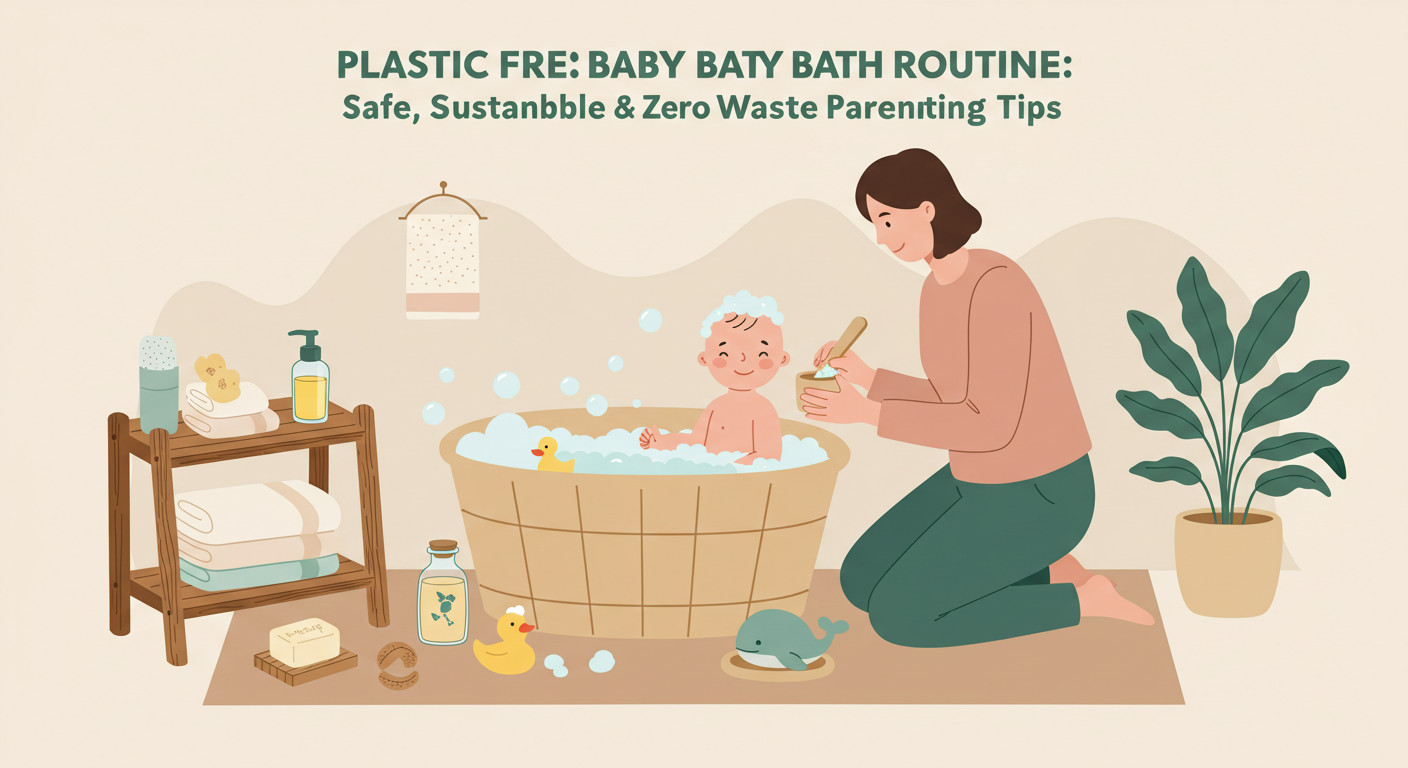
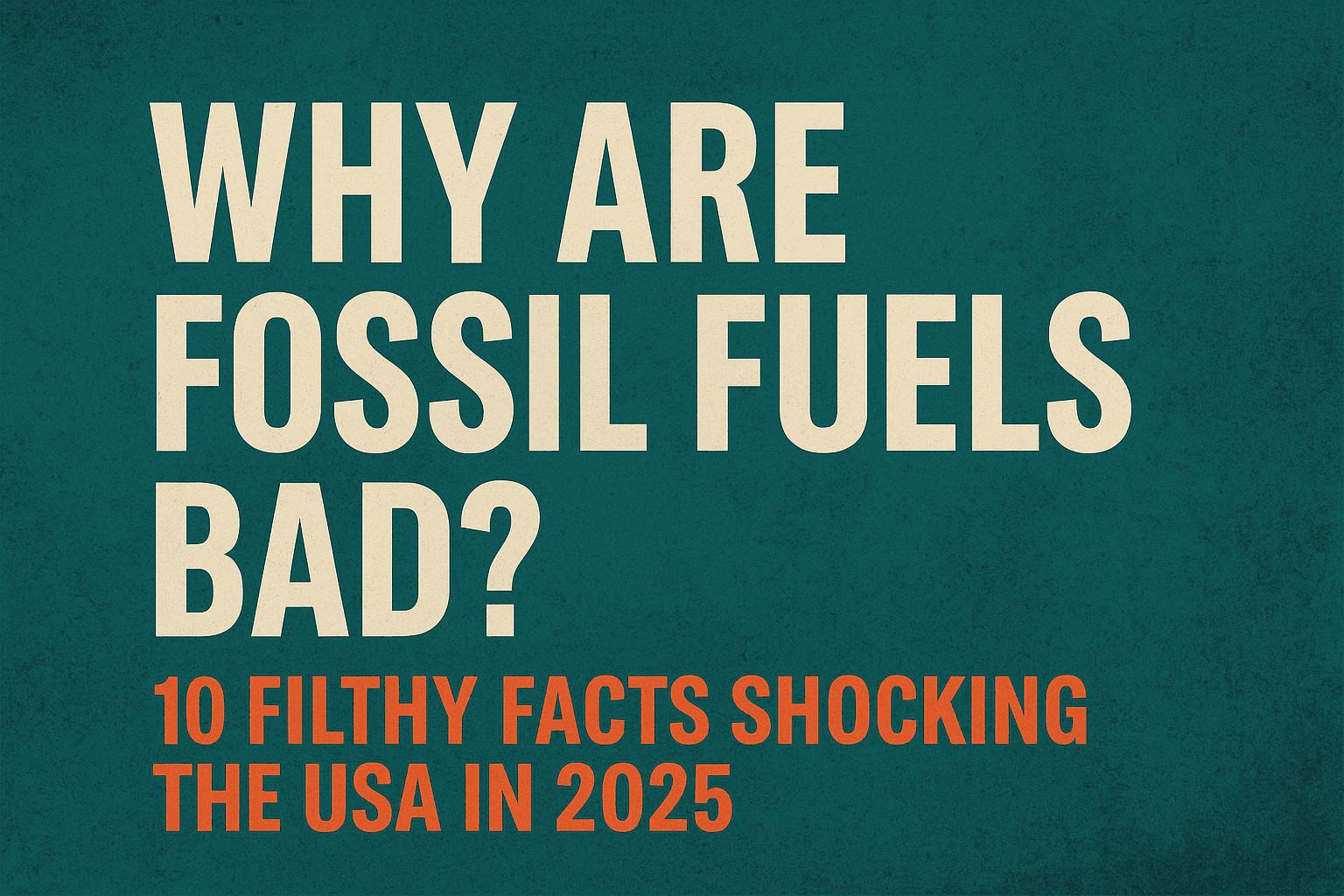
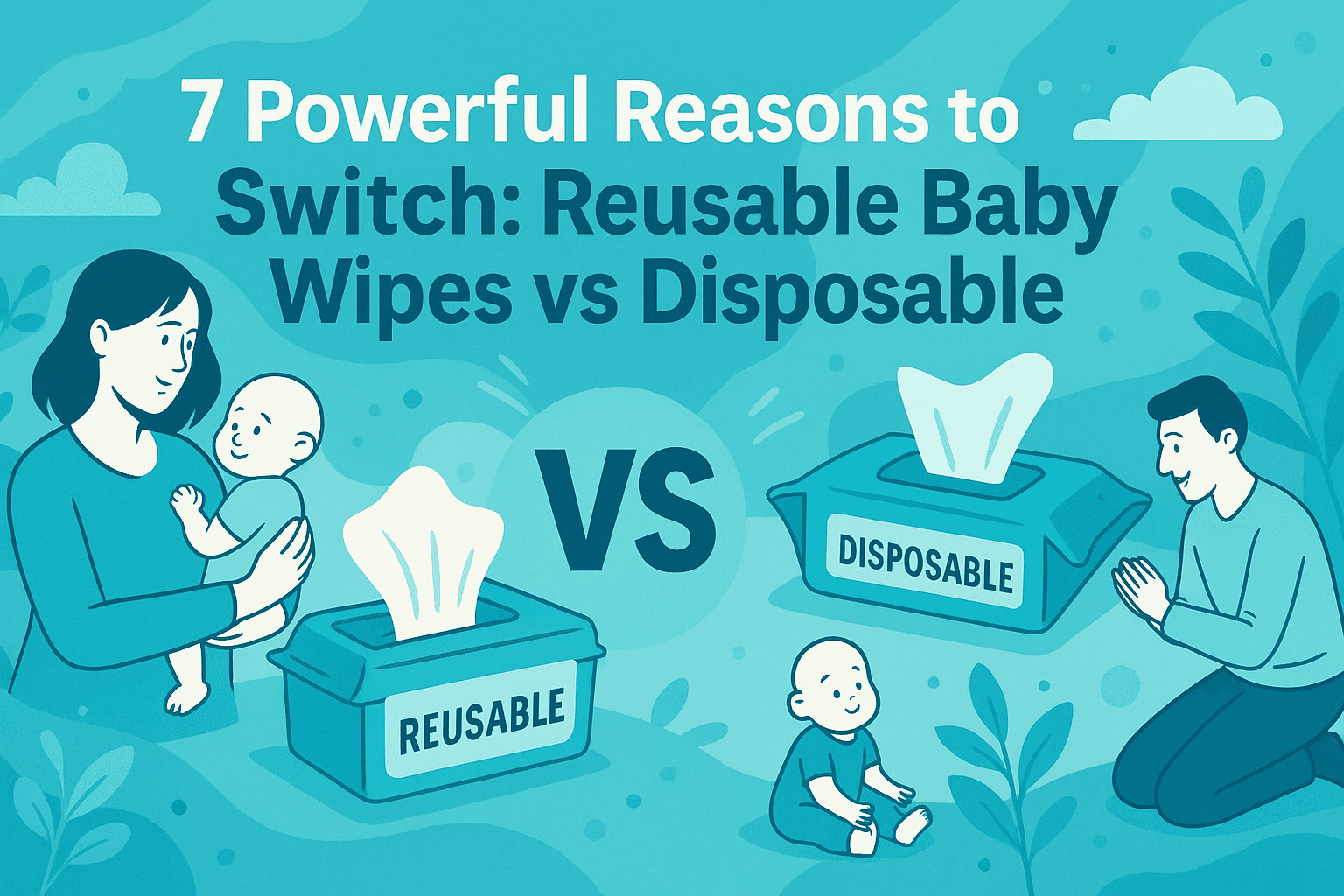
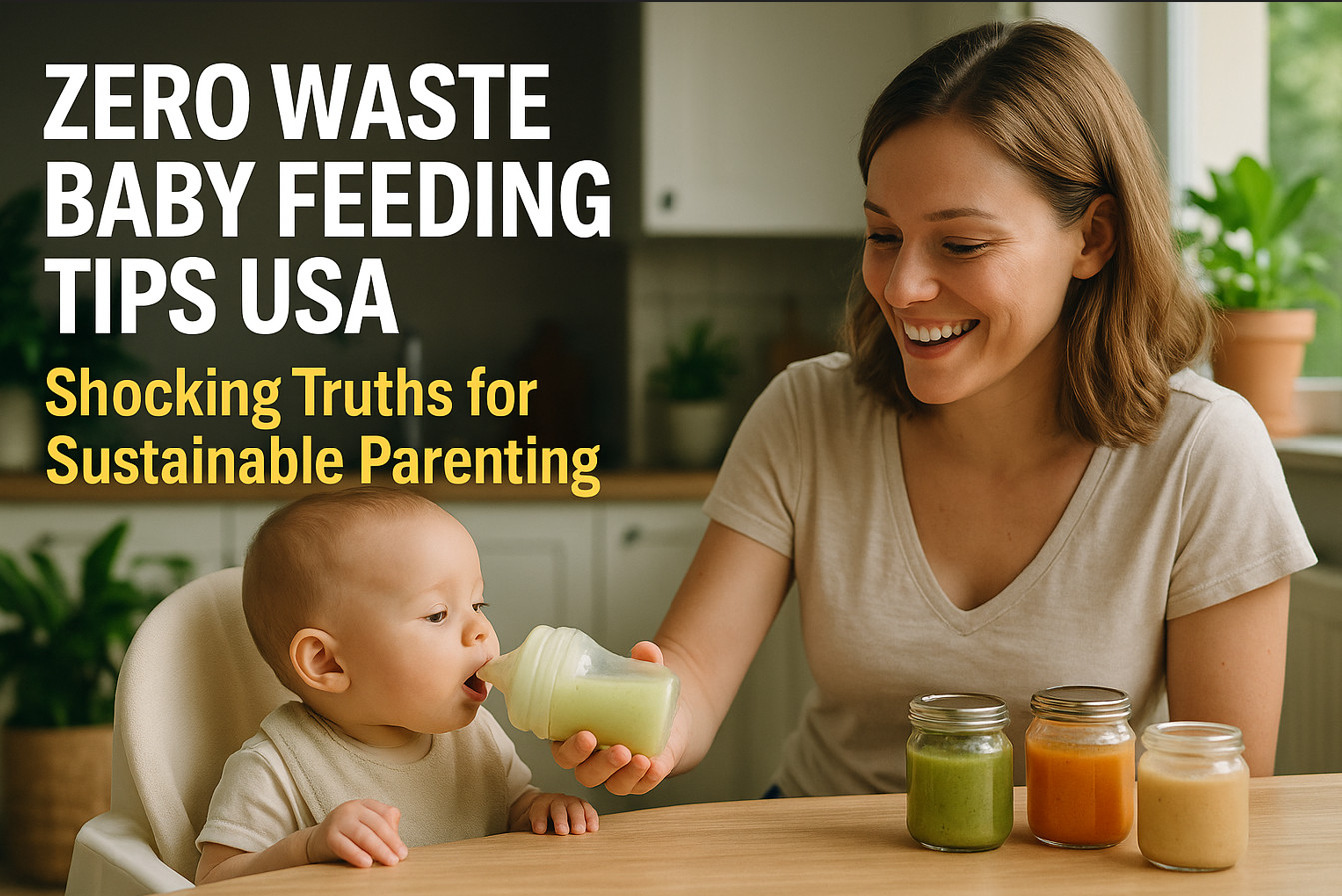
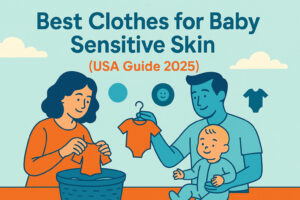
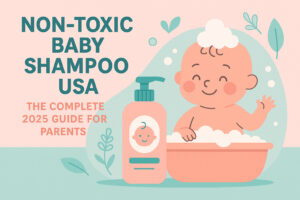
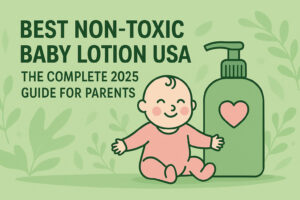
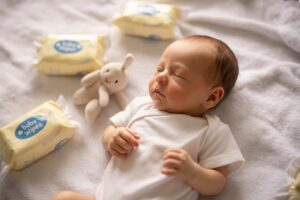
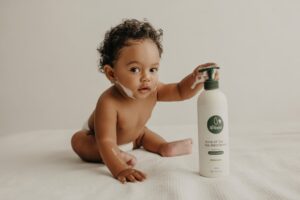
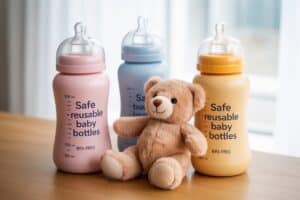
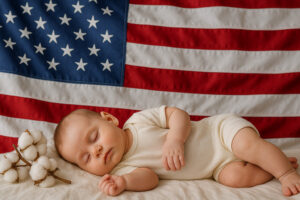
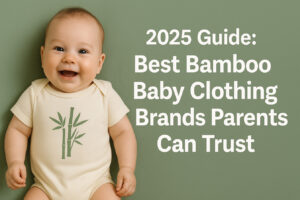
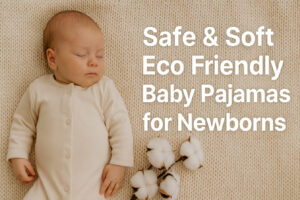
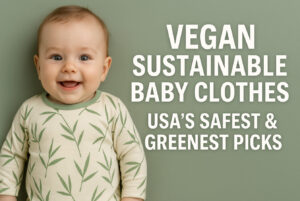
Post Comment